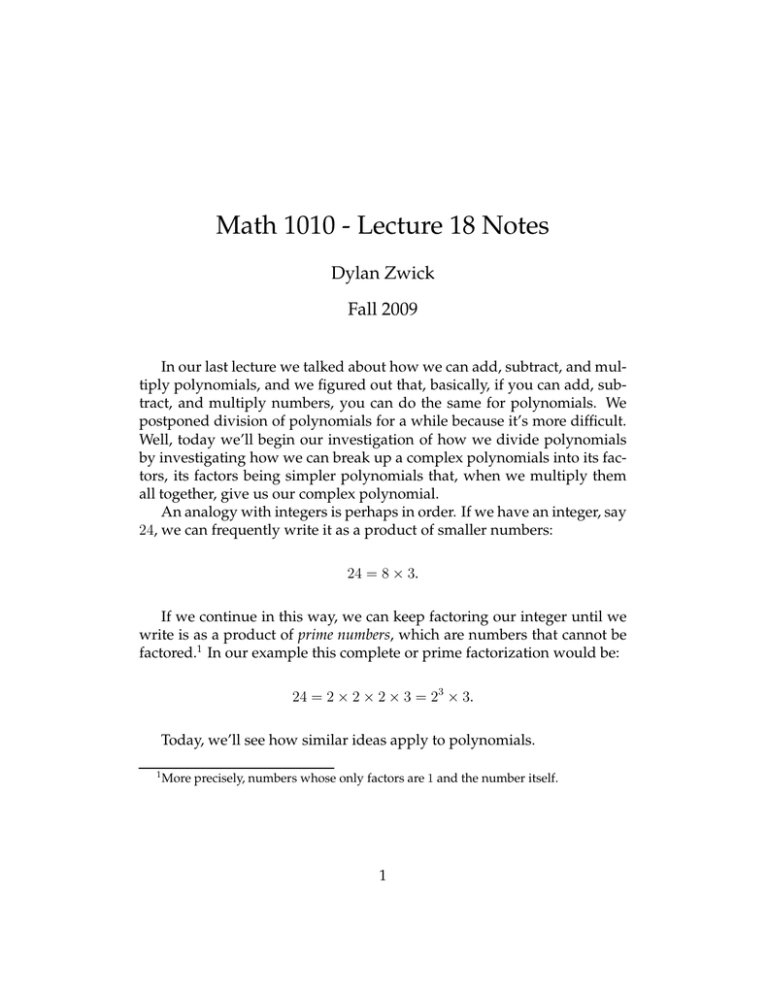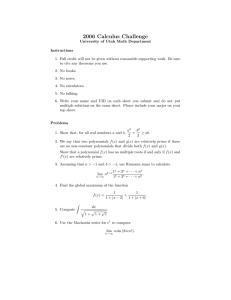Math 1010 - Lecture 18 Notes Dylan Zwick Fall 2009
advertisement

Math 1010 - Lecture 18 Notes Dylan Zwick Fall 2009 In our last lecture we talked about how we can add, subtract, and multiply polynomials, and we figured out that, basically, if you can add, subtract, and multiply numbers, you can do the same for polynomials. We postponed division of polynomials for a while because it’s more difficult. Well, today we’ll begin our investigation of how we divide polynomials by investigating how we can break up a complex polynomials into its factors, its factors being simpler polynomials that, when we multiply them all together, give us our complex polynomial. An analogy with integers is perhaps in order. If we have an integer, say 24, we can frequently write it as a product of smaller numbers: 24 = 8 × 3. If we continue in this way, we can keep factoring our integer until we write is as a product of prime numbers, which are numbers that cannot be factored.1 In our example this complete or prime factorization would be: 24 = 2 × 2 × 2 × 3 = 23 × 3. Today, we’ll see how similar ideas apply to polynomials. 1 More precisely, numbers whose only factors are 1 and the number itself. 1 ax2 + bx + c For example, we may want to factor the trinomial: x2 + 6x + 9. The first thing we do is check if there are any common factors of the terms other than 1, and if there are, we factor out the largest one. In this case there are not. The next thing we do is try to write our trinomial as the product of two binomials. In other words, we want to write it as: x2 + 6x + 9 = (ax + b)(cx + d). In practice, what we do here is we look at the factors of the coefficient for x2 , and make those our possible values of a and c. We do the same thing for the constant term 9, and make those our possible values of b and d. Then, we just check the possible combinations to see if any of them work out. More precisely, we have: (ax + b)(cx + d) = acx2 + (ad + bc)x + bd and we want to find factors ac and bd such that, in our example, ad + bc = 6. The only factors of 1 are a = 1, c = 1 and a = −1, c = −1. The only factors of 9 are b = 3, d = 3 and b = −3, d = −3. If we try the positive 1 terms and the negative 3 terms we would get: (x − 3)(x − 3) = x2 − 6x + 9 6= x2 + 6x + 9. So, that doesn’t work. Let’s try when they’re both positive. (x + 3)(x + 3) = x2 + 6x + 9. 6






